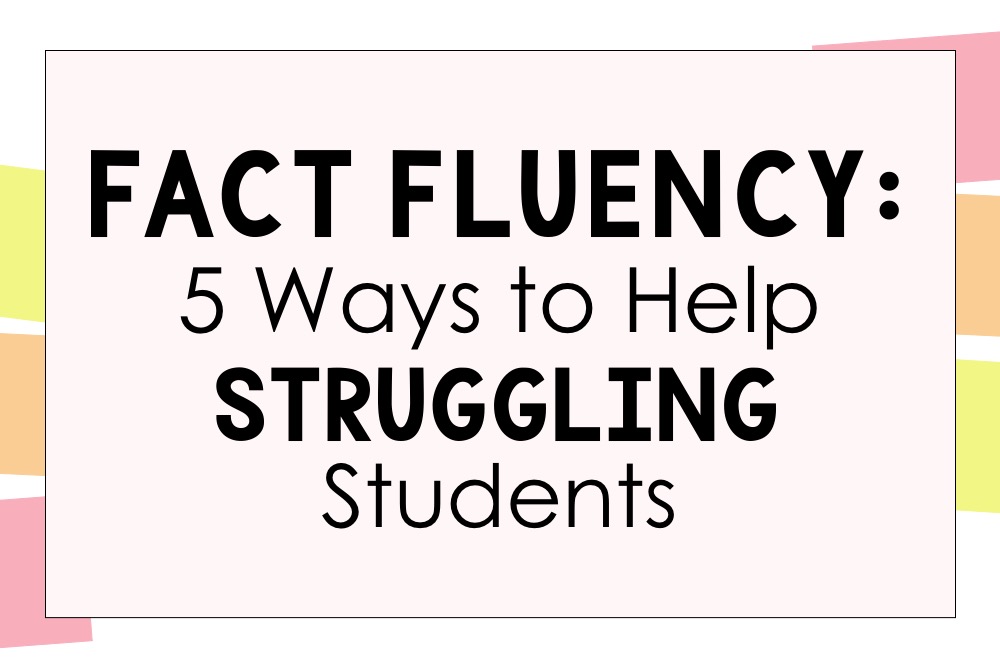
One goal we have in the second grade is to get students to fact fluency. That means that students can produce answers to addition and subtraction facts 1-20 in about 5 seconds or less. And for some, they get it right away. However, we have those students who struggle with fact fluency.
Those students when you ask them to find an answer to 8+4 and they say 54…
So what do we do to help those struggling students with fact fluency?
Well, no worries because I have 5 ways to help those struggling students get to fact fluency.
But if you want a step by step guide to help students get to fact fluency, then download my free workbook for 1st and 2nd grade teachers: The 7 Steps to Ensure Math Facts Fluency. Download your free digital copy here.

Also… If you’re a parent who has a child struggling with math, you’ve got to check out Learner. Learner is an online tutoring platform that sets students up for success. To get started take a short quiz about your child’s needs. Then Learner’s Success Management Team reviews that and matches your child with the perfect tutor. Get your $25 trial here.
Okay, let’s get started on the 5 ways to help struggling students with fact fluency.
Fact Fluency Math
Work with Students One-On-One
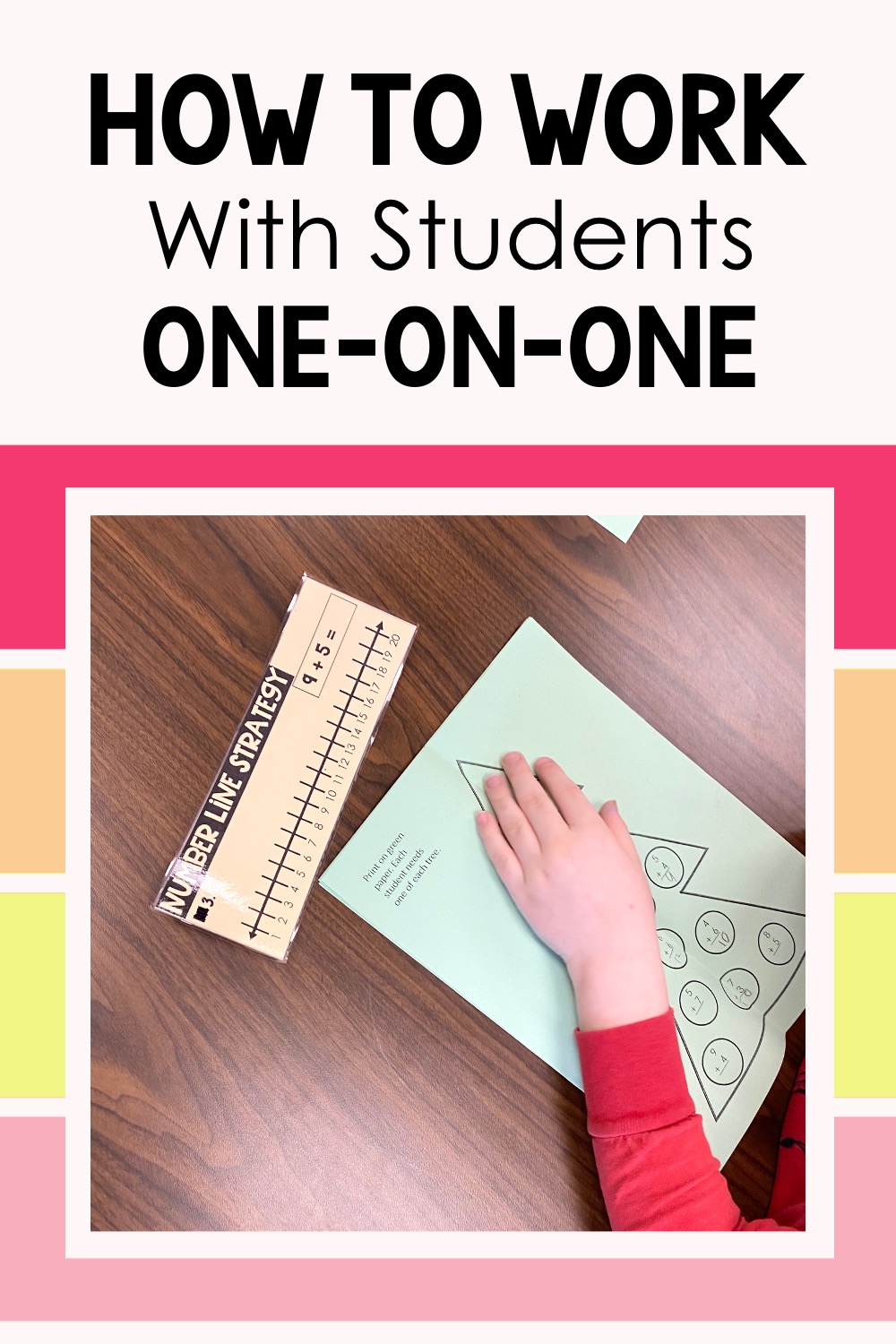
When you give your students whole group independent work, call students back to work with you one-on-one to improve fact fluency.
Now I know what you may be thinking… Ain’t nobody got time for that!
But what I like to do is give my students independent work. Then I call those struggling students back to work with me.
A great activity to do this with is math fact craftivities. When my students were doing my Christmas Math Fact Craftivity, I pulled a couple students back to my table to solve the math facts with a number line with me.
Here’s the thing. I only had to complete a couple problems with them and then they are able to complete the rest on their own.
Math Fact Riddles and I Spy Math Facts Worksheets would also be good activities for this.
Find my Winter Math Craft here.
Find my Valentine’s Math Craft here.
Teach Math Fact Strategies
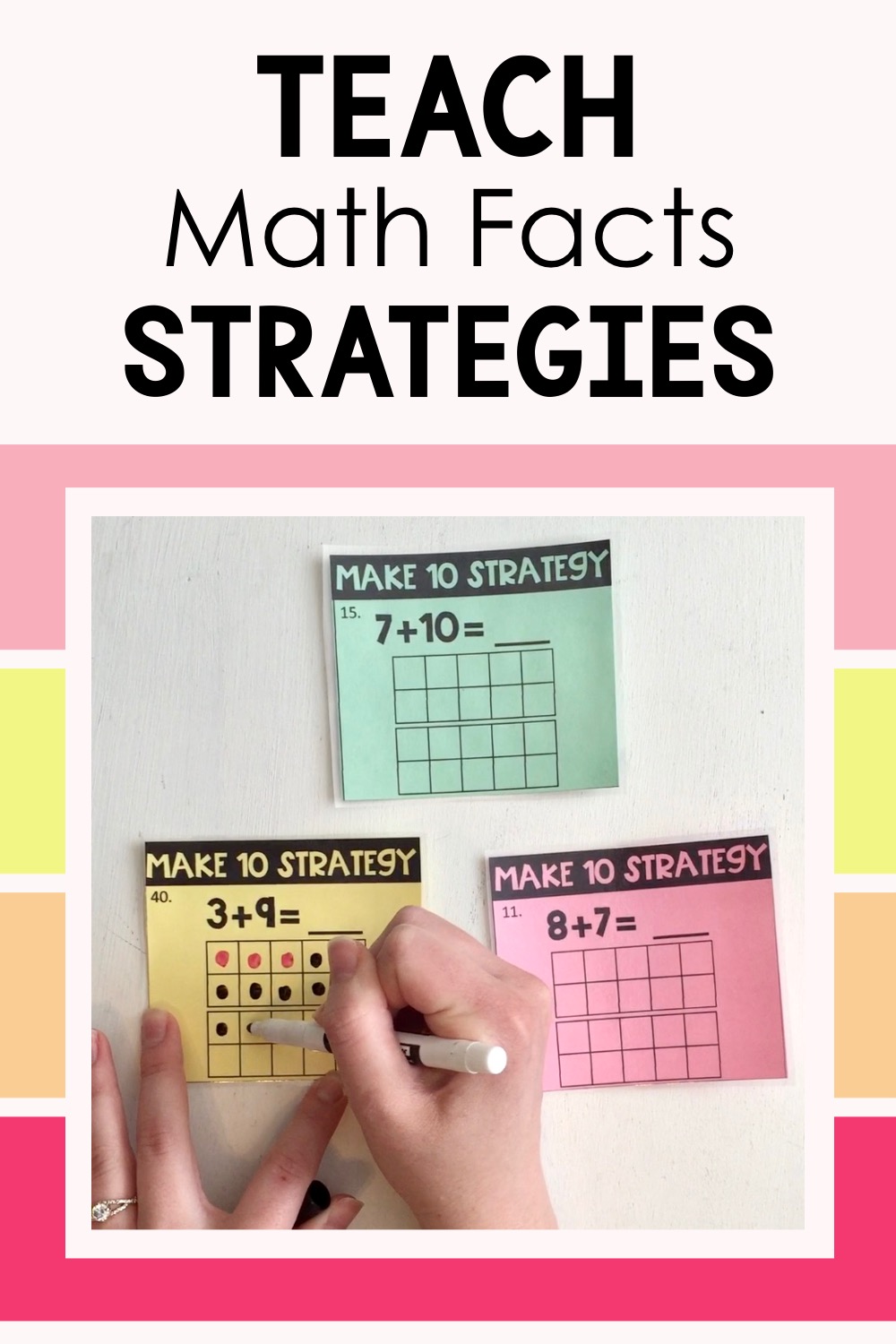
Math fact strategies help struggling students get to answers they may not have committed to memory yet. When students discover answers for themselves, it helps improve fact fluency.
If students don’t know a math fact, they need a way to find the answer. That is where math fact strategies come in.
I explicitly teach each math fact strategy to my students.
Then I hang up posters for my students to reference to. When a student is struggling with a fact, I can point to our posters and ask them what strategy they want to use.
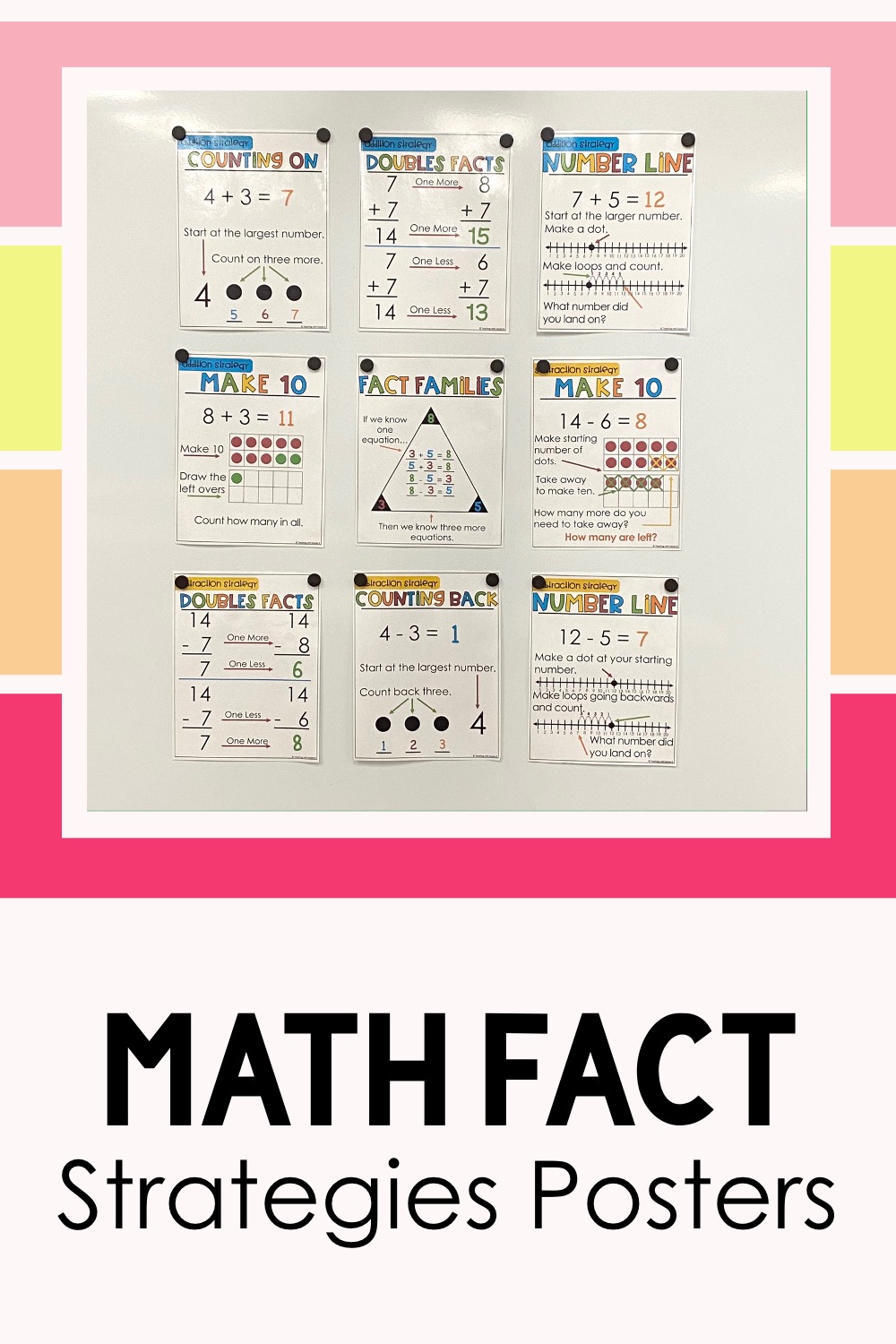
Having visuals for students to choose which math fact strategy to use can be very helpful for students who struggle with fact fluency.
Find all of my math fact strategies posters here.
Learn more about all the different math fact strategies in this blog post: Math Fact Strategies that Work.
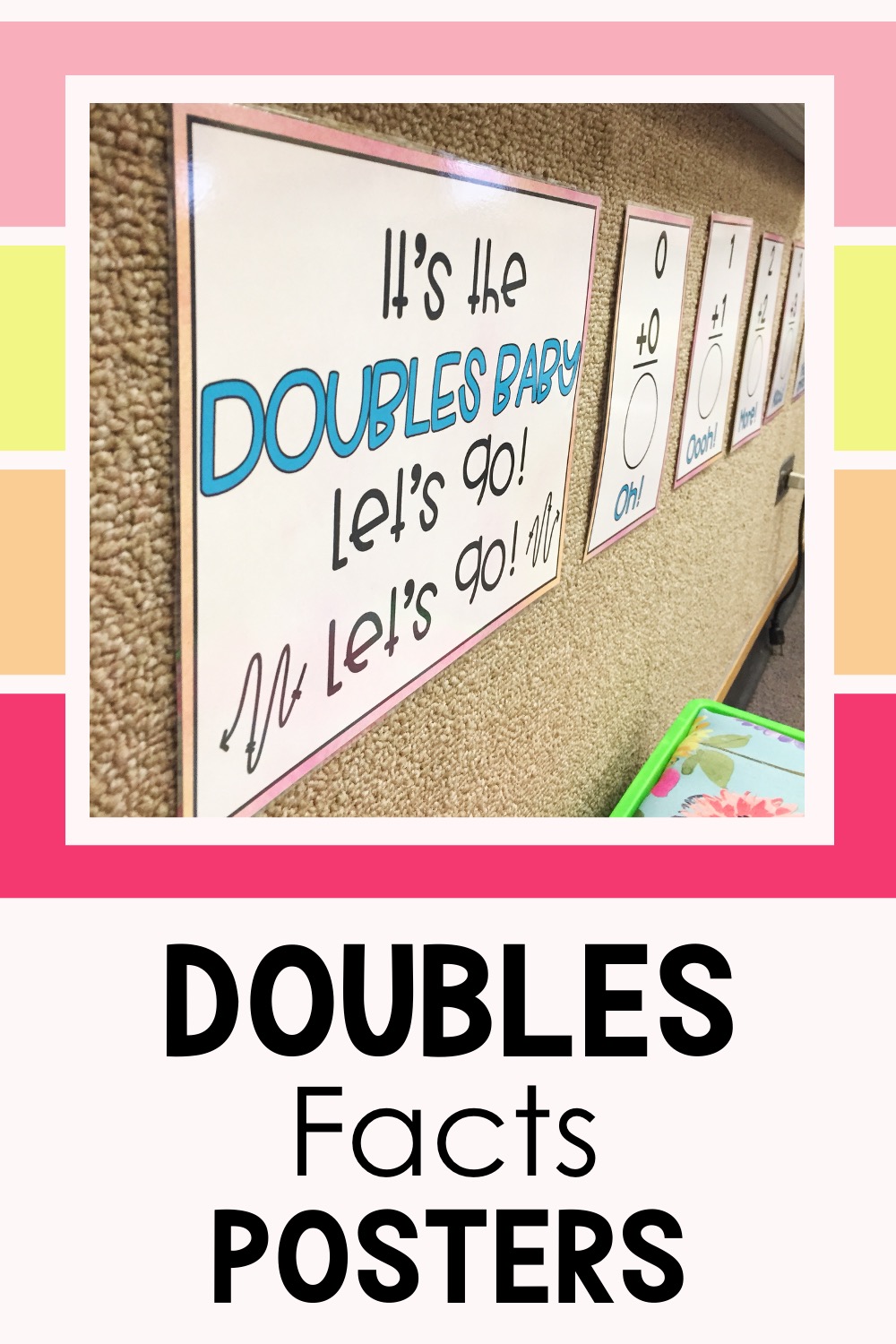
Songs and rhymes are a great way to help struggling students with fact fluency.
I also like to hang up posters to help students memorize Doubles Facts. Learn more about how to teach doubles facts to your students in this blog post: What Are Doubles Facts.
Help Point Out Good Strategies to Use
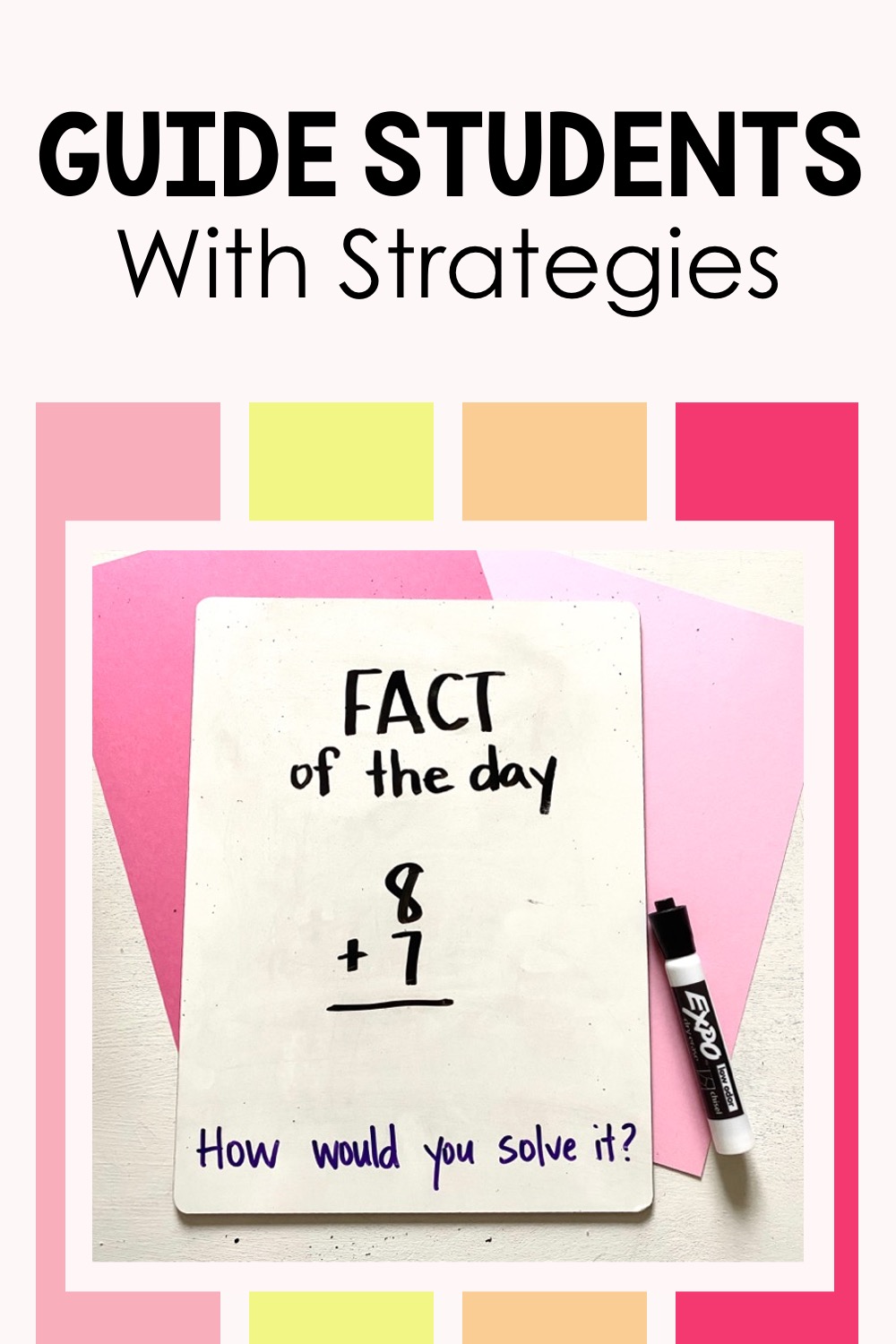
Some math fact strategies work better with certain math facts than others. Help guide students to which math fact strategy works best.
As I am working with students one-on-one, I help guide students to what strategy to use.
If they are struggling to find the answer to 12-6, I say to them, “ I know 6+6=12, so 12-6 equals…” and they can get to the answer.
Or if the equation is 8+3, I’ll say to them “I know 8+2=10 so 8+3 must equal…”
I’m giving them little hints on what reasoning they can do with known facts to get to unknown facts. This is a skill students have when they are getting close to math fact mastery. So It’s important for those struggling students.
To learn more about the 3 stages of math fact mastery, read this blog post here.
Help Students See Patterns With Math Facts
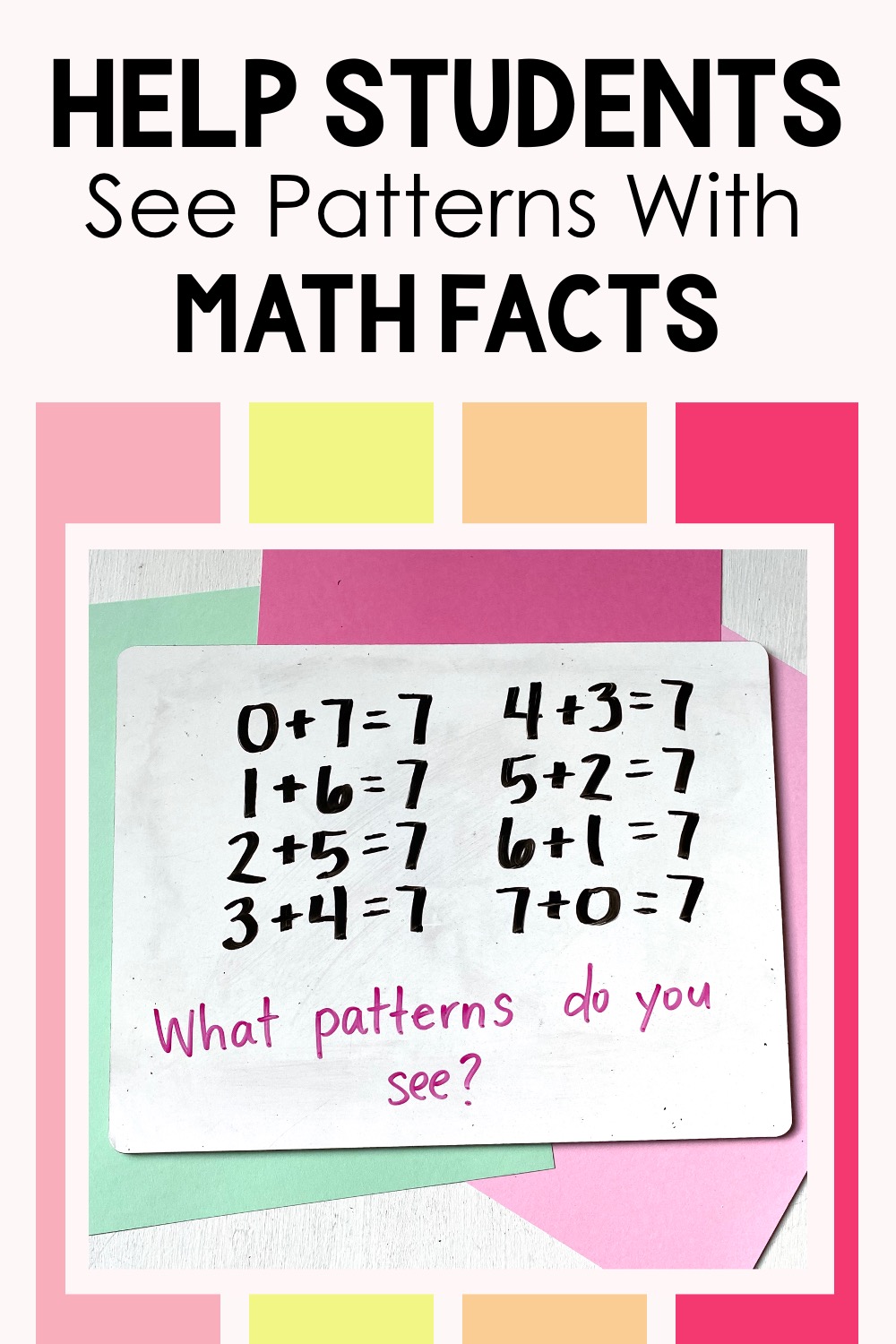
Often when students struggle with fact fluency, it is because they don’t see the patterns and relationships between math facts. Help students see the patterns and how to use them to help with fact fluency.
As students see the patterns with numbers and facts, they can see how they can help them find unknown math facts.
I love to have my students work with fact families. I want my students to know that if we know 5+3=8, then we know 3+5=8. And we also know 8-5=3 and 8-3=5.
Just by knowing one fact, students can know 3 more facts.
To help students see this pattern, decompose numbers with them. Use counters. Set out 8 of them. Flip over 3 of them so 3 are yellow and 5 are red.
Ask your students how much that makes? Write the equation 3+5=8.
Then make 5 red and 3 yellow. How many does that make? Write the equation 5+3=8.
Continue this with the subtraction equations. Then with other numbers and equations. Ask students what patterns they see.
I have more tips and activities like this in my free workbook: The 7 Steps to Ensure Math Fact Fluency. Download it free here.
Model Using Strategies
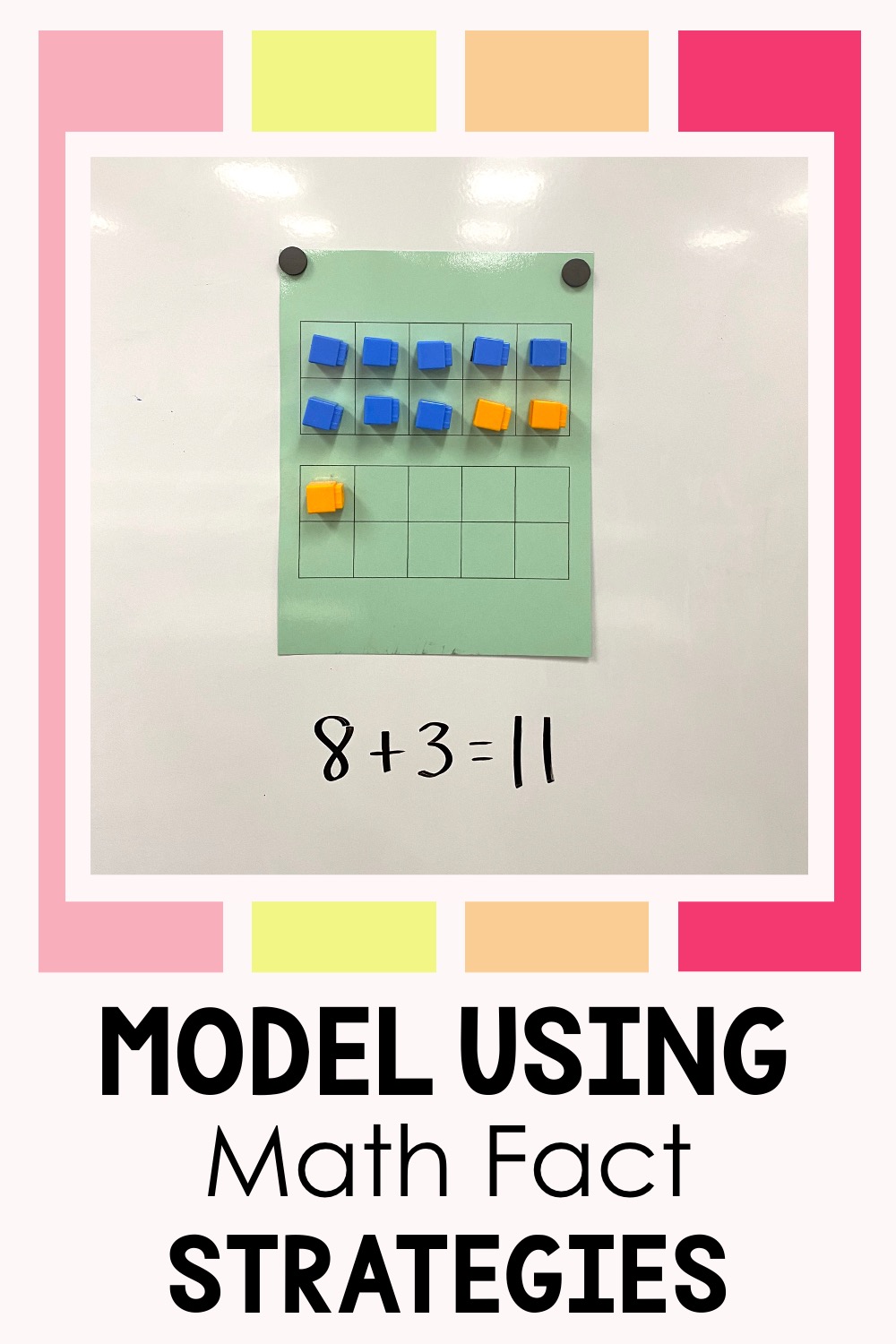
If you want students to use math fact strategies, you must model how to use them yourself.
If you want your struggling students to find fact fluency and use math fact strategies, you need to set the example.
As you come across math facts in your regular math lesson, model using different strategies. And think aloud to students so they know your reasoning.
To help me do this, I like to keep ten frames on my whiteboard and a number line. Then they are always there when I need them.
As students see you using the strategies, they are more likely to use them. Even for students who struggle with fact fluency.
I hope you have seen how you can do simple, yet powerful things to help those students who struggle with fact fluency.
It comes down to giving students tools to find the answers to math facts for themselves.
For more tips to help all students achieve math fact fluency, download my free workbook for 1st and 2nd grade teachers: The 7 Steps to Ensure Math Fact Fluency.

Download your free digital copy here.

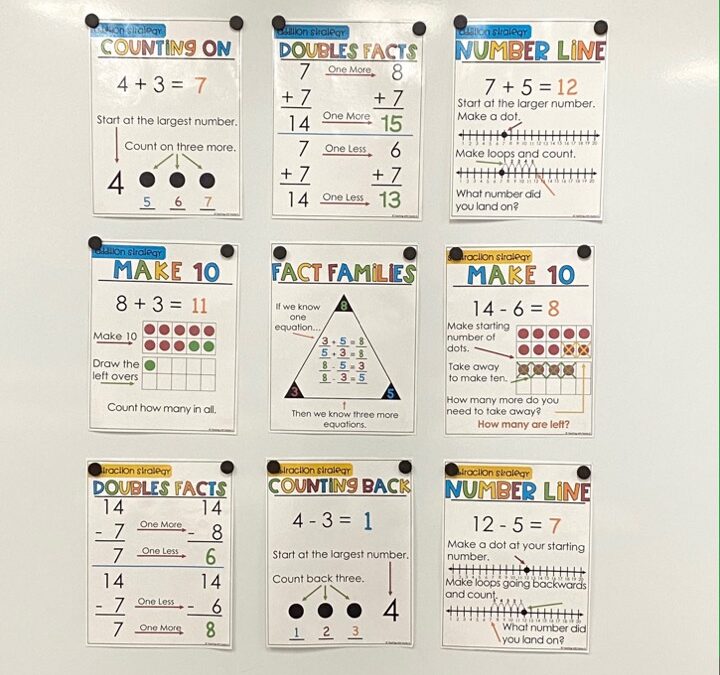

This is so helpful! I’m teaching math to a struggling learner with autism, and your guide on math strategies has been perfect for a non-math teacher like me!
Thank you so much for sharing your knowledge. I wish you success with your beautiful blog! Much love!
-Maria
Hey Maria! This makes me so happy to see. I’m so glad you have found it helpful.